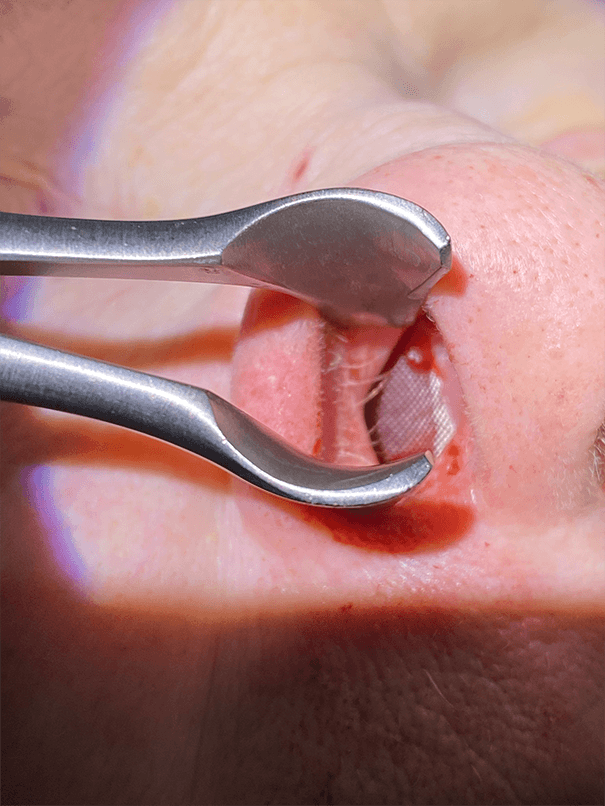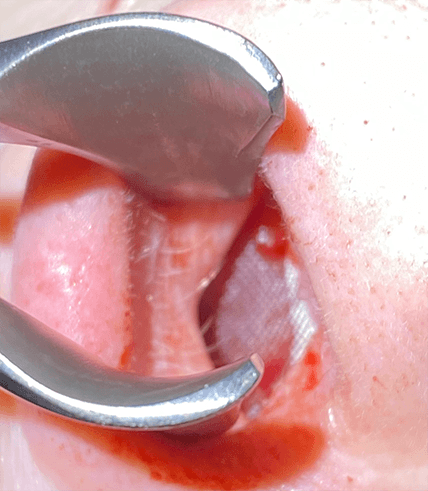Mishail A. Shapiro, DO
ENT / Facial Plastic Surgery
Apex Rhinology and Plastic Surgery Center
Objective:
Management of acute and recurrent epistaxis in an office setting.
Problem:
Nosebleeds are a common reason for ENT visits. They are most common in an elderly population, primarily in the fall and winter seasons, and are frequently associated with anticoagulation medications. Currently treatment involves silver nitrate cauterization, if the source of bleeding can be identified, and a nasal packing which is placed for 3-5 days to prevent immediate re-bleed.
The primary downside of the treatment protocol is that the silver nitrate destroys adjacent mucosa to facilitate fibrosis and vascular sclerosis. In an immediate aftermath it makes recurrence of epistaxis likely. Non absorbable nasal packing is uncomfortable to the patient and has to be maintained in place long enough to allow for vascular fibrosis and mucosal re-epithelialization.
Solution:
BloodSTOP iX (BSiX) for control of the anterior nasal bleeds for initial hemostasis and to facilitate mucosal re-epithelialization. BSiX can be applied a priori directly to the bleeding site or after electro or chemo cauterization.


BloodSTOP iX applied on bleeding site
How to Use BSiX for Epistaxis:
- Suction nasal cavity of blood to visualize the bleeding site. Spray nose with a topical vasoconstrictor.
- Using dry forceps to avoid material adherence, apply BSiX hemostatic dressing sheet, cut into 1×3 cm pieces and placed along the septum. Cover the bleeding site. Usually several pieces of BSiX are needed and I use the smaller pieces to place directly.
- Apply several sprays of topical vasoconstrictor directly to the covered area and cover with a thin layer an Bactroban ointment.
- If bleeding is controlled, discharge after 15 min observation. If blood continues to ooze, place an absorbable packing to provide additional pressure support. Instruct patient to use Bactroban ointment and to avoid blowing their nose.
NOTE: If clinically appropriate, an anticoagulation protocol should be held for a few days.
Advantages:
I frequently find that the BSiX alone is adequate for bleeding control without the need for cauterization. That said, even if the cauterization is used, the mucosal healing is faster, reducing the need for prolonged packing.
Posterior bleeds can be controlled but require advanced placement skills to prevent BSiX adhesion to the instruments. I commonly use BSiX post-surgery to reduce bleeding and to facilitate mucosal recovery.
